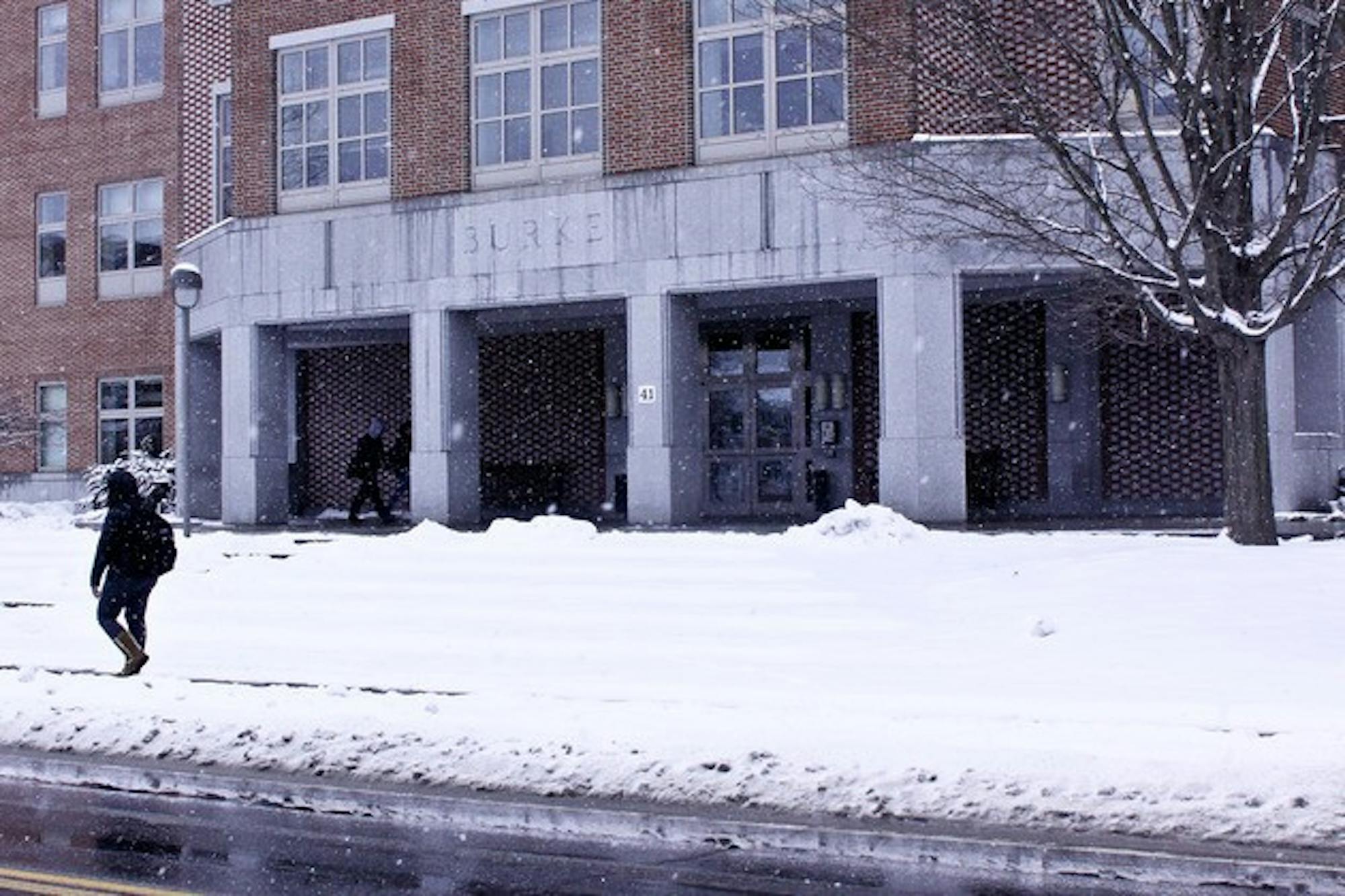Patrick O'Hern, the day-to-day operations coordinator and project manager of the Burke construction, said that the project encompasses two different initiatives being worked on simultaneously. The first component is the replacement of steam-absorption chillers with electric chillers, which are 10 times more efficient, according to O'Hern. The second compontent entails the replacement of 132 separate fume hood fans with six large exhaust fans.
"Burke is the biggest energy hog on campus," Kimberly Strauch '15, an intern in the Women in Science Program who is researching the construction process, said, noting that the building is responsible for the processing and transport of the College's chilled water. Packard said he expects returns in the form of saved energy and increased sustainability, as well as monetary savings. In five years, the changes created by the construction will have paid for themselves, he said.
"The energy program group within engineering identified this opportunity and requested the money to hire consultants," Packard said. "Part of the reason it took so long was because of the pre-planning. How do you do this work while the building is still occupied? How do you work on a heart while it's still beating?"
In order to accommodate the construction, the team responsible for planning the changes separated the project into phases. The chilled-water project will be completed first, according to O'Hern. Since December 2011, two 12-inch pipes have been laid down in order to create a more robust system for chilled water transportation. Construction had to occur during the winter because it is the season during which water chillers are used least, said Packard.
This week, cranes will remove the steam absorbers and electric chillers will be installed. The new electric chillers will be ready by April.
Currently, three chemistry labs are closed, but they will reopen next week after the fume hood changes are made, according to Packard. A centralized duct and heat coils will also be put in place in order to remove exhaust and recover energy that would have otherwise been lost.
"They've organized it in such a way that they're doing things as quickly as possible," Strauch said. "But definitely things can take longer than expected. A lot of time you can't predict the little things."
Half of chemistry professor David Glueck's lab has been shut down since December, he said. His research students have split their work between the half that is open and another lab.
"We've already passed the original estimated date [for moving back in]," Glueck said. "But it's not as bad as it could have been. It's been inconvenient, not a disaster."
O'Hern said he attributes the setback to a delay in the delivery of equipment at the beginning of construction.
"We've hit a rhythm now," he said. "I think the staff has been taking it great. It's more or less going to look the same."
Packard also said visible construction will be kept to a minimum, as the aesthetics of Dartmouth's campus are a priority. Much of the new machinery, especially the exhaust fans, will be stored in the penthouse of Burke, which serves as mechanical space.
Strauch said the project was "Dartmouth's best kept secret." Van Zelm Heywood and Shadford Incorporation, an engineering firm in Connecticut, was contracted for the project. The firm previously worked on the Class of 1978 Life Sciences Center, according to Packard. He said that the technological changes being made to Burke are standard practice for newer chemistry buildings. Burke, which was built in the early 1990s, nearly employed such technology, but its designers opted for a more conservative design, according to Packard.




